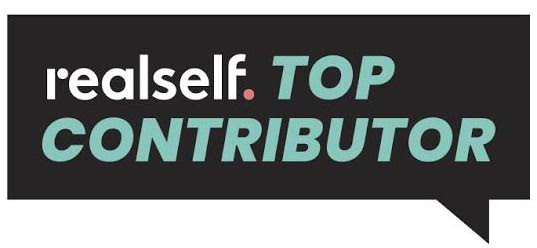Eyelid surgery, often referred to as blepharoplasty, serves both cosmetic and medical purposes. The procedure can target the upper eyelids, lower eyelids, or both, aiming to remove excess skin, reduce puffiness, and correct droopy eyelids. These issues not only affect appearance but can also impair vision, making the surgery beneficial for health and aesthetics. The surgery is typically performed by an oculoplastic surgeon, a specialist in surgeries around the eyes. This expertise ensures that the delicate eye area is handled with precision and care.
Before undergoing eyelid surgery, a comprehensive consultation with your surgeon is essential. During this consultation, the surgeon will evaluate your medical history, examine your eyelids, and discuss your goals and expectations. This is also the time to ask any questions you may have about the procedure, recovery, and potential risks.
Anesthesia options for eyelid surgery vary. Some procedures are done under local anesthesia with sedation, while others might require general anesthesia. The choice depends on the complexity of the surgery and the patient’s comfort.
The surgical process involves making incisions in the natural creases of the eyelids to minimize visible scarring. Through these incisions, the surgeon removes or repositions excess skin, muscle, and fat. In some cases, the surgery may also involve tightening the underlying muscles and tissues to provide a more youthful appearance.
Understanding the detailed steps of eyelid surgery helps set realistic expectations and prepares you for the journey ahead. With the right preparation and a skilled oculoplastic surgeon, you can look forward to achieving your desired results. Khan Eyelid and Facial Aesthetics, led by oculoplastic and reconstructive surgeon Dr. Tanya Khan, provides eyelid surgery to patients in Plano, Dallas, Austin, Texas, and surrounding locations.
Initial Recovery Phase
The first phase of recovery following eyelid surgery is vital for effective healing. Typically spanning one to two weeks, this period requires patients to focus on rest and adhere strictly to the care instructions provided by their surgeon. Immediately after the surgery, patients are advised to use cold compresses to reduce swelling and keep their head elevated to facilitate healing. It’s crucial to steer clear of any strenuous activities that might strain the eyes or increase blood pressure to the face.
Patients should also carefully follow their prescribed medication schedule, which may include antibiotics to prevent infection and pain relievers to manage discomfort. In addition, attending all follow-up appointments with the oculoplastic surgeon is essential to monitor progress and address any concerns promptly.
During this initial phase, patients may experience some degree of swelling and bruising around the eyes, which is entirely normal and expected. These symptoms will gradually improve over the first two weeks but can be managed more effectively by maintaining an elevated head position even while sleeping. Proper hydration and a balanced diet rich in vitamins and minerals can also support the body’s healing process.
It’s important to avoid activities such as bending over, heavy lifting, and rigorous exercise during this recovery period. These activities can exacerbate swelling and increase the risk of complications. Patients should also refrain from using contact lenses until they receive approval from their surgeon, as inserting or removing them can irritate the healing eyelids.
Lastly, protecting the eyes from excessive sunlight and wind by wearing sunglasses when outside can help shield the sensitive area and contribute to a smoother recovery.
Managing Swelling and Bruising
Swelling and bruising are common after eyelid surgery. To minimize these symptoms, using cold compresses and keeping the head elevated can be very effective. It’s advisable to avoid activities that could increase blood flow to the face, such as bending over or heavy lifting. Staying hydrated and consuming a balanced diet can also aid the healing process.
Patients might notice that swelling and bruising peak within the first 48 hours and then gradually start to subside. However, the extent and duration of these symptoms can vary from person to person. Some individuals may experience more pronounced swelling and bruising, while others may see quicker improvements.
Proper care during this period is crucial. Applying cold compresses for 10-15 minutes at a time, several times a day, can help reduce swelling. It’s also beneficial to sleep with the head elevated to further decrease swelling. Drinking plenty of fluids and avoiding salty foods can prevent additional fluid retention, which can contribute to swelling.
Bruising around the eyes might change colors as it heals, transitioning from dark purple or blue to yellow and green before completely fading away. While these color changes can be concerning, they are a normal part of the healing process.
Additionally, avoiding smoking and alcohol can significantly aid recovery. Both substances can impede the body’s natural healing mechanisms and prolong the presence of swelling and bruising.
Patience and adherence to the post-operative care instructions provided by the oculoplastic surgeon are key to managing these symptoms effectively. Being gentle with the eye area and protecting it from excessive sunlight by wearing sunglasses can also support the recovery process.
Pain and Discomfort Management
Discomfort levels following eyelid surgery are typically mild to moderate. Effective pain management often includes using over-the-counter medications like acetaminophen. In some cases, your oculoplastic surgeon may prescribe stronger pain relievers if necessary. It’s crucial to avoid non-steroidal anti-inflammatory drugs (NSAIDs) such as ibuprofen and aspirin unless specifically advised by your surgeon, as these can increase the risk of bleeding.
Following your surgeon’s post-operative care instructions is essential for managing discomfort. Rest is a key factor in reducing pain, so make sure to get plenty of sleep and avoid activities that could strain your eyes or increase blood pressure to your face.
Applying cold compresses as directed can also alleviate discomfort. Keeping your head elevated, even while sleeping, helps reduce swelling, which in turn can ease pain. Staying hydrated and eating a balanced diet rich in vitamins and minerals supports your body’s healing process, potentially reducing the duration and intensity of discomfort.
Additionally, avoiding smoking and alcohol is crucial during this recovery period, as both can hinder the body’s natural healing mechanisms and prolong discomfort. If you wear contact lenses, it’s advisable to switch to glasses until your surgeon gives you the green light to resume using them.
While managing pain, it’s also important to monitor your symptoms closely. Any sudden increase in pain or the development of new symptoms should be promptly reported to your oculoplastic surgeon. Regular follow-up appointments will help ensure that your recovery is progressing well and that any concerns are addressed in a timely manner.
Guidelines for Returning to Daily Activities
During the recovery period, it’s essential to listen to your body and follow your oculoplastic surgeon’s advice on when to resume daily activities. For many patients, light activities such as walking can be reintroduced within a few days post-surgery, as long as they do not cause strain or increase blood pressure to the face.
However, more demanding tasks, including exercise routines, heavy lifting, or activities that require bending over, should be avoided for a longer duration, typically four to six weeks. These activities can exacerbate swelling and delay the healing process. Always seek your surgeon’s approval before resuming any physical exertion.
If you work in a job that involves minimal physical activity, you might be able to return to work within one to two weeks. Those with more physically demanding jobs may need additional time off to ensure proper healing. Discuss your specific job requirements with your surgeon to get personalized advice.
When it comes to resuming normal activities, patience is key. While it can be tempting to jump back into your usual routine, giving your body ample time to heal is crucial. Wearing sunglasses to protect your eyes from harsh sunlight and wind can help during this phase, especially if you need to be outdoors.
Lastly, avoid activities that could lead to eye irritation, such as using contact lenses, until you have your surgeon’s go-ahead. This careful approach will help ensure a smooth and successful recovery, allowing you to enjoy the full benefits of your eyelid surgery.
Long-term Results and Expectations
Patience is essential when waiting for the final results of eyelid surgery. Initial improvements can be seen within a few weeks, but the full benefits often take three to six months to become apparent. Factors such as skin type, age, and the extent of the procedure can influence the outcome. Regular follow-up appointments with your oculoplastic surgeon will ensure your recovery is progressing well.
During this time, the appearance of your eyelids will gradually improve as swelling subsides and the tissues settle into their new shape. It’s crucial to follow your surgeon’s post-operative care instructions to support optimal healing and achieve the best results.
Realistic expectations are important. While eyelid surgery can greatly enhance the look of your eyes, individual results will vary. Some patients may experience subtle changes, while others may see more dramatic improvements. Maintaining a healthy lifestyle, including proper skin care and sun protection, can help prolong the benefits of the surgery.
If any concerns arise during the recovery process, address them promptly with your surgeon. Open communication and adherence to the recommended care plan are key to a smooth recovery and achieving the desired outcome. Remember, the ultimate goal is not just improved appearance but also overall eye health and function. By taking care of your eyes and following your surgeon’s guidance, you can enjoy the long-term benefits of your eyelid surgery.
For more information about procedures and treatments at Khan Eyelid and Facial Aesthetics by Ophthalmic surgeon Dr. Tanya Khan. Click here to contact us.
Taking patients from in and around Dallas, Plano, Fort Worth, Grapevine, Garland, Mesquite, Carrollton, Irving, Frisco, Texas and more.









Schedule a Consultation: 972-EYE-LIDS (393-5437)